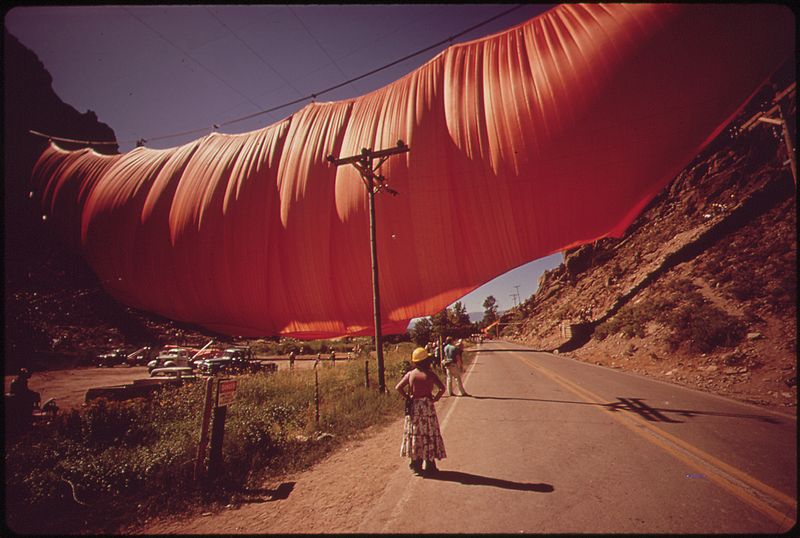The Monastery of Saint Ivan of Rila, better known as the Rila Monastery (Bulgarian: Рилски манастир, Rilski manastir) is the largest and most famous Eastern Orthodox monastery in Bulgaria. It is situated in the southwestern Rila Mountains, 117 km south of the capital Sofia in the deep valley of the Rilska River at an elevation of 1,147 m above sea level. The monastery is named after its founder, the hermit Ivan of Rila (876 - 946 AD).
Founded in the 10th century, the Rila Monastery is regarded as one of Bulgaria's most important cultural, historical and architectural monuments and is a key tourist attraction for both Bulgaria and Southern Europe. In 2008 alone, it attracted 900,000 visitors. The monastery is depicted on the reverse of the 1 lev banknote, issued in 1999.
Christo
Christo was born in Gabrovo, Bulgaria. His father, Vladimir Javacheff, was a businessman and ran a fabric factory, and his mother, Tsveta Dimitrova, was the secretary at the Academy of Fine Arts in Sofia. Professors from the Academy who visited his family observed Christo's artistic talent while he was still of a very young age.
Christo studied art at the Sofia Academy from 1953 to 1956 and went to Prague, Czechoslovakia (now Czech Republic), until 1957, when he left for the West by bribing a railway official and stowing away with several other individuals on board a train transporting medicine and medical supplies to Austria.
Christo quickly settled in Vienna and enrolled at the Vienna Academy of Fine Arts. After only one semester there, he traveled to Geneva and moved to Paris in 1958. As a result of his flight, he lost his Bulgarian citizenship and became a stateless person. His life in Paris was characterized by financial hardship and social isolation, which was worsened by his difficulty learning the French language. He earned money by painting portraits, which he likened to prostitution and signed with his family name "Javachef" while his early works were signed "Christo".

Wrapped Reichstag, Berlin

Valley Curtain 1972 (USA)